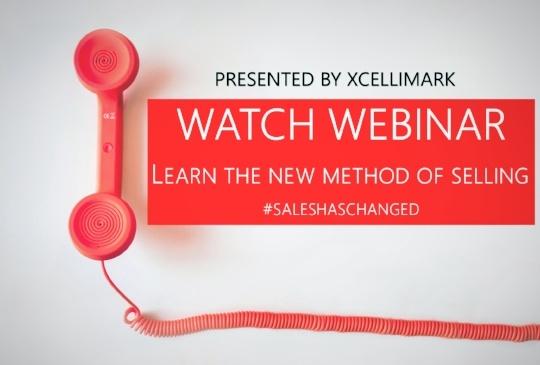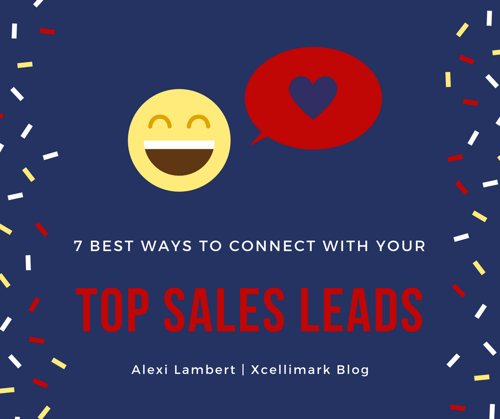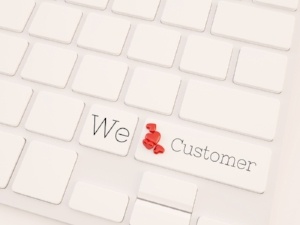Why "Identifying" Your Sales Lead Is A Brilliant Sales Move

 I was sitting in a meeting room at HubSpot Headquarters in Boston, alongside my small group of peers. We were the beta group for their Inbound Sales Training and we eagerly soaked up every word they taught us on Inbound Sales. It became very clear to me, very fast, what was so amazing about this whole sales methodology.
I was sitting in a meeting room at HubSpot Headquarters in Boston, alongside my small group of peers. We were the beta group for their Inbound Sales Training and we eagerly soaked up every word they taught us on Inbound Sales. It became very clear to me, very fast, what was so amazing about this whole sales methodology.
A sales person now has to be helpful.
No more "pushy" or "slimy" sales tactics for sales teams. Just like Inbound Marketing, it is all about connecting with people, building and nurturing relationships, helping first with their goals or challenges, and finally, if they are a good fit and you can actually solve their problem, then you propose a solution for them.
Back in that room at HubSpot, we had the honor of getting trained by Dan Tyre, the Sales Director of HubSpot. His topic was about Buyer Personas, but it went beyond that. I remember Dan saying (and I have it written down in my notebook), "The Mission of Inbound Marketing is to produce a higher number of qualified leads."
Qualified leads: every salesperson's dream. That means less time spent on leads that were never going to buy because they were never a good fit for your product or service. That means a higher sales closing rate because they fit right into the bubble of people who would love to try out your product or service.
The problem is that sales teams waste valuable time on prospecting and attempting to sell to people who don't want or need what they are selling. This ultimately leads to these unfortunate stats:
- 50% of sales time is wasted on unproductive prospecting. [HubSpot]
- The #1 challenge for sales reps is prospecting. [HubSpot]
- Only 33% of inside rep time is spent actively selling. [CSO Insights]
The good news? Inbound Sales fixes these problems if implemented correctly. It comes down to four stages:
- Identify
- Connect
- Explore
- Advise
I'll primarily focus on the first stage, Identify, in this article so I can really dive into the best ways to master this stage. Don't worry, I'll be writing more on the rest, but each stage needs its due diligence to effectively implement into your sales strategy.
Who's Your Favorite Lead?
In a nutshell, this first stage is all about identifying who your ideal leads are. These are the qualified leads that are most likely to buy from you.
If it was so easy to do, then sales reps wouldn't be wasting so much time on unproductive prospecting. But that doesn't mean it's not absolutely crucial to your success in business growth.
So where do you start?
Buyer personas. If your marketing department is doing their job well, then they have already identified your buyer personas and are targeting the right people.
But the sales team needs to go a step further and discover even more information about their leads. This means knowing exactly who your leads are, understanding where they are coming from, what they want, what they care about, where they spend most of their time and what drives them to make decisions.
It is the makeup of both demographic information and psycho-graphic factors. The demographics are the superficial factors that make up who they are on paper.
This includes:
- Age
- Gender
- Location
- Income
- Hobbies
- Interests
The psycho-graphic factors are why they buy. These are the factors that make up who they are as a person.
This includes:
- How they live their lives
- Attitudes
- Personality
- Goals, wishes and dreams
- Pain points
- Personal motivations
- Overall receptiveness to interacting with other personalities
- Where they spend their time
When you truly understand who a person is, why they are the way they are and what they care about, you can align with those factors to connect with them.
The important thing to remember is that these personas also tell you if they are a good fit for your business or not. If their persona does not fall within certain criteria that makes up your favorite, most ideal type of client or lead, then you will know to move on and focus on people who do align with your ideal clients.
This saves time, energy, money and grief for both people.
How to be the Dale Carnegie of Sales
Dale Carnegie, author of "How to Win Friends and Influence People" hit the nail on the head when he said:
"Why talk about what we want? That is childish. Absurd. Of course, you are interested in what you want. You are eternally interested in it. But no one else is. The rest of us are just like you: we are interested in what we want."
That is one way you can describe the Inbound way of selling. If you haven't heard the news already, sales has changed in the world we live in today. With all the advanced technology and everything available at your fingertips, sales people are no longer in control of the sales process. The buyer has all the control.
The buyer doesn't want to deal with a salesperson anymore. The buyer doesn't care as much about what a sales person is trying to sell them. They have become desensitized to everyone claiming that their product or service is the best.
They would rather figure it out for themselves.
As a result, it has forced sales people to choose to either keep selling the way we have always done it, knowing that the buyer is different than what they have been in the past. Or, sales people have to care about what the buyer wants.
It's kind of refreshing once you think about it. Being human comes first now before being a salesperson. You have to align with the buyer's attitudes, wants, needs, goals, dreams, challenges, emotions, values, mediums they understand and where they like to spend their time.
So by the time you've gotten to know your buyer persona and they actually contact you for help, you care about this person. You want to help them. You want to help solve their problem. And you end up being genuine, instead of being "pushy."
To quote Dale Carnegie again, "The difference between appreciation and flattery? That is simple. One is sincere and the other insincere. One comes from the heart out; the other from the teeth out. One is unselfish; the other selfish. One is universally admired; the other universally condemned."
To master the inbound sales methodology, be unselfish, sincere and appreciative. Help first and sell second.
How To Make It Work
Now that you have identified your buyer persona, mapped out their journey and know the first way to implement Inbound Sales, you can tie it all together.
To put it into motion, focus on the qualified leads that have already connected with you or your company in some way. This is associated with the "Attract" stage of Inbound Marketing, which then aligns with the "Identify" stage of Inbound Sales.
Some examples of people being attracted to your company and starting the beginning phase of engagement include:
- Visiting your website
- Filling out a form
- Opening an email you or your company sent them
- Attending a shared event
- Commenting on your post
Once they have done any of these actions, they are no longer a "cold" lead. They are more of a "warm" lead. You're not contacting them out of the blue. They have already shown interest in some way in your product, service or company.
That is your chance to connect with them if you identify them as a qualified lead.
If their form of contact was not very informative, such as simply visiting your website, you can still discover if they are a qualified lead by doing some effective prospecting research.
Some tools that are awesome for effective prospecting include:
- Social media (LinkedIn, Facebook, Twitter, Instagram, Pinterest, Google+, etc.)
- HubSpot Prospecting Tool
- HubSpot Social Media Monitoring Tool
- CRM
- Google Alerts
- Search Engines
- Press Releases
- Their Company Website
- Charlie App
- Slack
Gather all the information you can find, record it for when you need it in the future and see if they qualify as a good lead. If they're a match, then build a helpful, nurturing and mutually-beneficial relationship with them so hopefully, one day, you will do business together.
To help with your prospecting research, answer the following questions:
- What website pages has your prospect looked at? This will give you an idea of the topics they are interested in talking about and care most about.
- Did they state a challenge they struggle with most while filling out a form on your website? Gather resources tailored around that challenge to help them.
- Did they recently have a promotion? (Hint: Look on LinkedIn) Congratulate them on that promotion because, seriously, that's awesome.
- What topics have they recently tweeted about? Most likely that topic is something they would love to have a conversation about. At the very least, this helps builds rapport.
Another great tip is to set up real time alerts when a qualified lead has contacted you or your company. That way, you can quickly reach out to them at a time when you are top of mind for them. You can also do this with a target account list that is a great a fit for you. Tailor it by industry, revenue, number of employees, location and more.
The proven end result of all of your research in truly identifying who your prospects are: happier customers, higher retention rate, more sales and massive business growth overall.
Stay tuned for the next article on the second step to mastering Inbound Sales - the Connect Stage.








